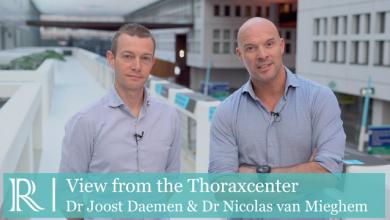Sudden Cardiac Death
Proven therapy for patients at early risk of sudden cardiac death
The risk of sudden cardiac death (SCD) or serious cardiac arrhythmias in patients with heart failure is particularly high in the initial period after an acute cardiac event. 1,2 Also the clinical condition of patients often changes during this time.3 Therefore the medication is optimally adjusted in accordance with guideline recommendations before a decision is made on the necessity of further long-term therapy, such as the implantation of an implantable cardioverter defibrillator (ICD). 4
Left-ventricular ejection fraction (LVEF) is still the most reliable predictor of this risk. According to the guidelines of the European Society of Cardiology (ESC) and of the American Heart Association (AHA)/American College of Cardiology (ACC)/Heart Rhythm Society (HRS), patients with an LVEF ≤ 35% after an acute cardiac event should be considered for a wearable cardioverter defibrillator (WCD; LifeVest® ZOLL CMS) during the three-month drug therapy optimization phase. 4, 5, 6. This approach is supported by extensive evidence, including data from more than 20,000 patients from retrospective and prospective registries and a large randomized controlled trial, demonstrating the clinical effectiveness of the WCD in terminating ventricular tachyarrhythmias.1, 7-11 The median wearing time in the most recent European registries were above 23 hours daily 9, 12
The LifeVest wearable cardioverter defibrillator is a treatment option for patients at risk of sudden cardiac death that can offer advanced protection and monitoring during the early period after a cardiac event while medical therapy is being optimized and permanent risk is established. Unlike an ICD, LifeVest is worn outside the body rather than implanted in the chest. LifeVest is designed to continuously monitor a patient’s heart, detect certain life-threatening rapid heart rhythms, and automatically deliver a treatment shock to restore normal heart rhythm.
Prof. Christian Perings
The Sudden Cardiac Death section is supported by ZOLL

Sources:
- Olgin JE. et al. N Engl J Med 2018; 379: 1205–1215.
- Solomon SD. et al. N Engl J Med 2005; 352: 2581–2588.
- Kutyifa V. et al. Circulation 2015; 132: 1613–1619.
- Ponikowski P et al. ESC guidelines for the management of acute and chronic heart failure. Eur Heart J 2016; 7(27):2129-2200
- Priori SG et al. 2015 ESC guidelines for the management of patients with ventricular arrhythmias and the prevention of ventricular arrhythmias
- Al-Khatib S. et al. Journal of the American College of Cardiology 2018 72.14: e91-e220
- Epstein AE. et al. JACC 2013; 62: 2000–2007.
- Kutyifa V. et al. Circulation 2015; 132: 1613–1619.
- Wäßnig N. et al. Circulation 2016; 134: 635–643.
- Nguyen E. et al. J Innov Card Rhythm Manag 2018; 9: 3151–3162.
- Olgin JE. et al. J Cardiovasc Electrophysiol 2020;1–10. https://doi.org/10.1111/jce.14404.
- Garcia R. et al. EP Europace, euaa268, https://doi.org/10.1093/europace/euaa268









